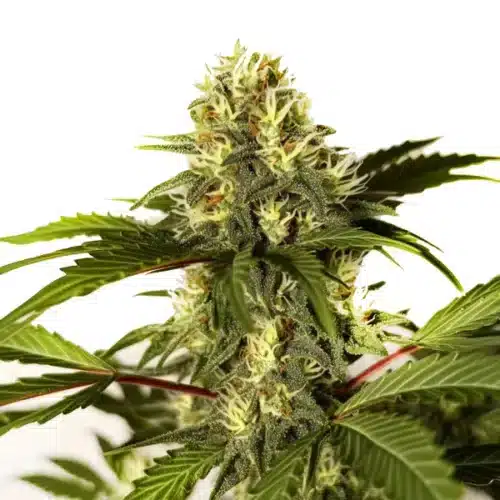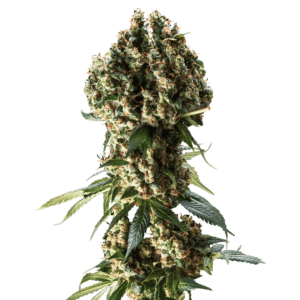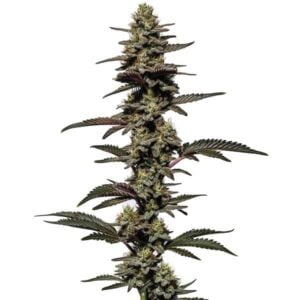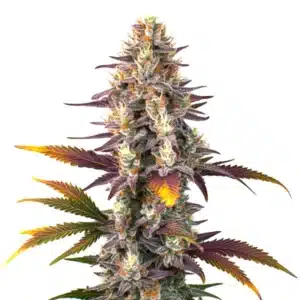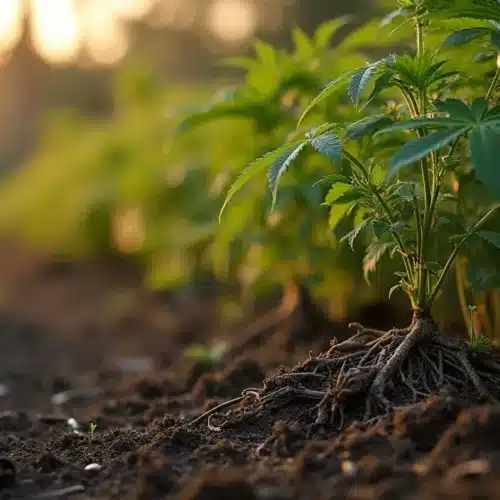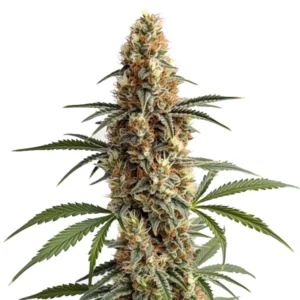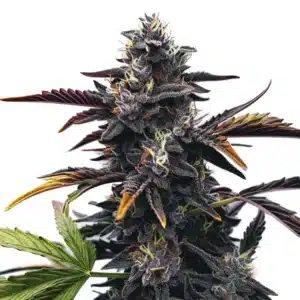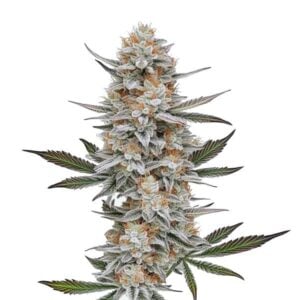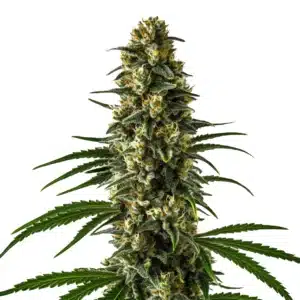Coma Strain Cannabis Seed Description
The Coma Strain is a highly sought-after cannabis strain known for its potency and unique characteristics. It is a hybrid strain that offers a well-balanced blend of Indica and Sativa effects, making it a favorite among cannabis enthusiasts.
The Coma weed Strain is recognized for its high THC percentage, typically ranging from 20% to 25%, making it a powerful choice for those seeking a strong and euphoric experience.
Recommended Strains
Coma
 THC: 24% - 26%
THC: 24% - 26% Type of seed: Feminized
Type of seed: Feminized Phenotype: Mostly Indica
Phenotype: Mostly Indica Day to flower: 8 - 10 weeks
Day to flower: 8 - 10 weeks
Do-si-Dos F1
 THC: 26% - 30%
THC: 26% - 30% Type of seed: Feminized F1
Type of seed: Feminized F1 Phenotype: Mostly Indica
Phenotype: Mostly Indica Day to flower: 8 - 9 weeks
Day to flower: 8 - 9 weeks
This strain produces dense and resinous buds with a distinct aroma and flavor profile. The terpene profile of Coma Strain includes earthy, piney, and citrus notes, creating a delightful smoking or vaping experience.
When it comes to yields, Coma weed Strain can produce impressive results, with indoor growers achieving around 450-550 grams per square meter, and outdoor growers can expect up to 600 grams per plant when grown in ideal conditions.
Promos & Deals
Environmental Requirements for Growing Marijuana Coma Strain
Creating the ideal environment for your Coma Strain plants is crucial to ensure their optimal growth and development. The environmental requirements of this strain will help you provide the best conditions for a successful cultivation process.
The Coma weed Strain thrives in a temperate climate, with temperatures ranging between 70-80°F (21-27°C) during the day and slightly cooler temperatures at night. It is essential to maintain a stable temperature and humidity level within the grow space to prevent stress or potential issues such as mold or mildew.
When growing Coma Strain indoors, providing adequate lighting is crucial. High-quality LED grow lights or HPS lamps are recommended to ensure proper photosynthesis and robust bud development. During the vegetative phase, provide a light cycle of 18-20 hours of light per day, and switch to 12 hours of light and 12 hours of uninterrupted darkness to initiate flowering.
For outdoor cultivation, choose a location with ample sunlight and a favorable climate. Coma weed Strain thrives in a sunny and warm environment, allowing it to reach its full potential. If you live in a region with cooler climates, consider using a greenhouse or providing additional protection to extend the growing season and safeguard your plants from adverse weather conditions.
Setting Up The Growing Cannabis Space
Before you begin growing Coma Strain, it is essential to set up an efficient and well-organized growing space. Whether you choose to cultivate indoors or outdoors, the following factors should be considered:
Indoor Cannabis Cultivation
For indoor growers, selecting the right grow tent or dedicated grow room is crucial. Ensure that the space provides sufficient room for the plants to grow vertically and has proper ventilation to maintain a fresh airflow. Install an efficient exhaust system with a carbon filter to control odors and prevent the accumulation of heat or humidity. Use reflective materials or Mylar sheets to maximize light distribution and avoid light leaks that could disrupt the flowering phase.
Choose a suitable growing medium for Coma weed Strain, such as high-quality soil or a hydroponic system, depending on your preferences and experience. Ensure proper drainage to prevent waterlogging and maintain a balanced pH level of around 6.0-6.5 for optimal nutrient absorption.
Outdoor Cannabis Cultivation
When cultivating weed Coma outdoors, select a location with plenty of sunlight and suitable soil conditions. Ensure the soil is well-draining and rich in organic matter. Consider using large containers or fabric pots to have better control over soil quality and root health. Additionally, protect your plants from strong winds by placing them near a fence or using windbreaks.
Using stakes or trellises to support the branches of your Coma weed Strain plants is recommended. This helps prevent the branches from bending or breaking under the weight of the dense buds and promotes better airflow.
Propagation and Germination of Marijuana Seeds Coma Weed Strain
Successful germination and propagation are essential for healthy and vigorous weed Coma plants. Follow these steps to ensure a high germination rate and successful propagation:
1. Start by selecting high-quality Coma Strain feminized seeds from a reputable seed bank. This ensures genetic stability and the feminization of your plants.
2. Begin the germination process by soaking the seeds in distilled water or a damp paper towel for 24-48 hours. Maintain a temperature between 70-85°F (21-29°C) and provide a dark and undisturbed environment.
3. After the seeds have soaked and developed taproots, transfer them carefully to a pre-moistened growing medium, such as a seedling tray or small pots filled with a light and well-draining soil mix.
4. Place the seeds in a warm and humid environment with gentle airflow. Maintain a temperature around 75-80°F (24-27°C) and a humidity level of 60-70% for optimal germination.
5. Provide indirect light to the seedlings during the first few days, gradually increasing the light intensity as they develop. Avoid exposing them to intense light or heat that could cause stress or damage.
6. Once the seedlings have developed a few sets of true leaves, they are ready to be transplanted into larger pots or the final growing containers.
By following these germination and propagation steps, you can ensure a successful start for your Coma weed Strain plants and establish a strong foundation for healthy growth and abundant yields.
Vegetative Phase of Cannabis seeds Coma Strain
The vegetative phase is a crucial stage in the development of your Coma Strain plants. Here are some key considerations during this phase:
Lighting: Provide your Coma Strain plants with 18-20 hours of light per day to promote vigorous vegetative growth. High-quality LED grow lights or HPS lamps are recommended to ensure sufficient light intensity and spectral distribution.
Nutrition: During the vegetative phase, your Coma weed Strain plants require a balanced and nutrient-rich diet. Use a reputable cannabis fertilizer with a higher nitrogen (N) content to encourage healthy leaf and stem growth. Follow the manufacturer’s instructions and monitor the plants for any signs of nutrient deficiencies or excesses.
Watering: Water your plants when the top inch of the soil feels dry. Avoid overwatering, as it can lead to root rot and other moisture-related issues. Allow the soil to dry out slightly between watering sessions, but ensure the plants do not experience extreme drought.
Training: Consider employing training techniques such as low-stress training (LST) or topping to control the height and shape of your Coma Strain plants. These methods help create an even canopy, increase light penetration, and promote better bud development.
Pruning: Remove any lower branches or leaves that receive little light or show signs of disease or pests. This helps improve airflow and reduces the risk of mold or mildew formation.
By providing your weed Coma plants with the right environmental conditions, nutrition, and care during the vegetative phase, you can establish healthy and robust plants ready for the flowering stage.
Flowering Phase of Marijuana Seeds Coma Strain
The flowering phase is the most anticipated stage of growing Coma weed Strain, as it is when the plants develop their characteristic buds. Here’s what you need to know:
Lighting: Adjust the light cycle to 12 hours of light and 12 hours of uninterrupted darkness to initiate the flowering phase. Use a timer to maintain a consistent light schedule. During this stage, your weed Coma Strain plants require intense light, so ensure your grow lights provide adequate coverage and maintain the appropriate distance from the canopy.
Nutrition: Transition from a nutrient formula higher in nitrogen to a bloom or flowering-specific nutrient formula. These formulations are generally higher in phosphorus (P) and potassium (K), which promote bud development and overall flowering performance. Monitor the plants closely and adjust nutrient levels as needed to avoid deficiencies or toxicities.
Temperature and Humidity: Maintain a slightly lower temperature during the flowering phase, ideally around 65-75°F (18-24°C), to encourage resin production and prevent heat-related stress. As for humidity, aim for levels around 40-50% to minimize the risk of mold or bud rot.
Support: As your Coma Strain plants enter the flowering phase, the weight of the developing buds may cause branches to bend or break. Provide adequate support using stakes or trellises to ensure the plants can bear the weight and avoid bud damage.
Flowering Time: Coma weed Strain typically has a flowering time of 8-10 weeks, but this can vary depending on the specific phenotype and environmental conditions. Monitor the trichome development using a magnifying tool to determine the optimal harvest window.
Throughout the flowering phase, maintain a vigilant eye for any signs of pests or diseases. Implement proper pest management practices and take immediate action at the first sight of infestation or abnormalities.
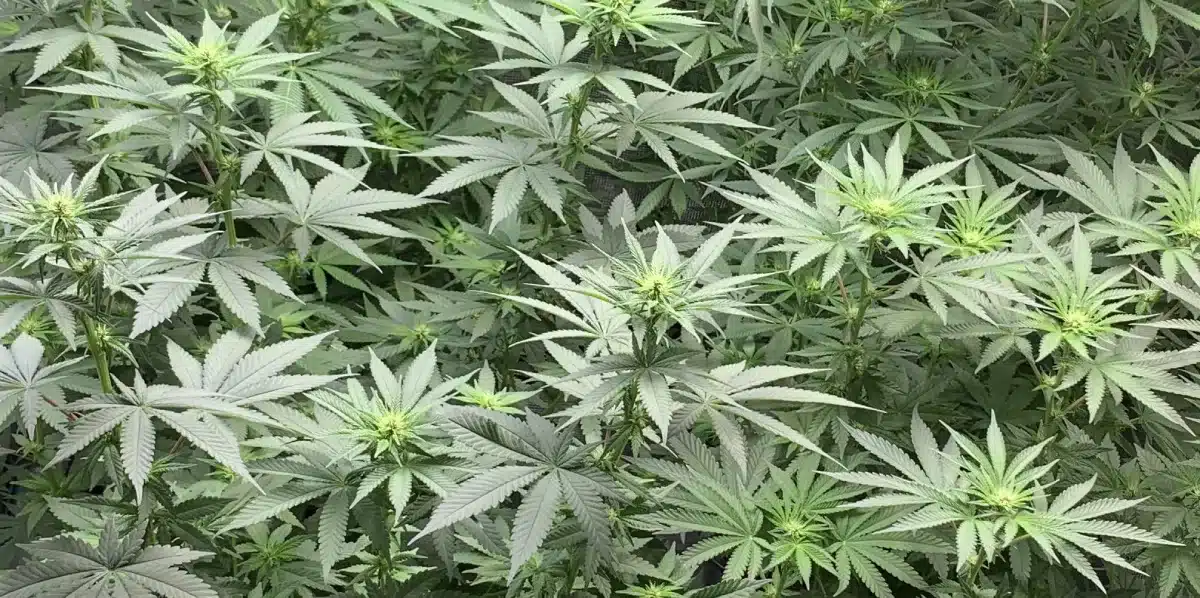
Cannabis Fertilization and Nutrition – Coma Strain
Proper nutrition and fertilization are crucial for maximizing the growth, yield, and overall health of your weed Coma plants. Consider the following tips:
Choosing the Right Fertilizer: Select a high-quality cannabis-specific fertilizer or nutrient line that provides a balanced blend of macro and micronutrients. Look for products rich in nitrogen (N), phosphorus (P), and potassium (K) to support healthy growth, root development, and bud formation.
Feeding Schedule: Follow the manufacturer’s instructions and adjust the feeding schedule based on your plants’ specific needs. Start with a lower concentration and gradually increase it as the plants progress through their growth stages. Monitor the plants closely for any signs of nutrient deficiencies or excesses, and make adjustments accordingly.
Supplements and Additives: Consider incorporating supplements and additives into your feeding regimen to enhance specific aspects of plant development. These may include bloom boosters, beneficial microbes, enzymes, or organic amendments that improve soil structure and nutrient availability.
Regularly monitor your plants’ response to the feeding program, adjusting nutrient concentrations and frequencies as needed. Remember to flush the plants with pure water during the final weeks of the flowering phase to remove any excess salts or nutrients, which can affect the flavor and overall quality of the final harvest.
Pest And Disease Control for Cannabis Growing – Coma Strain
While Coma Strain is known for its resilience, it is still susceptible to pests and diseases. Implementing proper pest and disease control measures is crucial to protect your plants and ensure a successful cultivation. Here are some preventive and corrective actions:
Prevention:
- Regularly inspect your plants for any signs of pests, such as spider mites, aphids, or thrips. Early detection is key to preventing a full-blown infestation.
- Maintain a clean and tidy growing space, removing any dead plant material or debris that could harbor pests or pathogens.
- Introduce beneficial insects, such as ladybugs or predatory mites, to your garden to help control pests naturally.
- Ensure proper airflow and ventilation in the growing space to reduce the risk of mold or mildew formation.
- Quarantine new plants or clones before introducing them into your growing area to prevent the spread of pests or diseases.
Corrective Actions:
- If you detect pests, use organic or low-toxic pest control methods, such as neem oil or insecticidal soap, to treat affected plants. Avoid using harsh chemical pesticides that can harm your Coma weed Strain plants and compromise the quality of your final harvest.
- For more severe infestations, consider isolating affected plants to prevent the spread of pests to healthy ones. You can also use biological control agents or consult with a professional for assistance.
- If you notice signs of diseases, such as mold, mildew, or fungal infections, address them promptly. Remove and dispose of affected plant parts to prevent the disease from spreading. Use organic fungicides or treatments specific to the identified disease.
- Maintain a vigilant watch on your Coma Strain plants throughout their growth cycle. Regular inspections and quick action are crucial for preventing and managing pests and diseases effectively.
Harvesting and Curing for Cannabis Growing – Weed Coma
Harvesting and curing your Coma Strain buds correctly are essential steps to ensure the best flavor, potency, and overall quality of your cannabis. Follow these steps:
Harvesting:
1. Determine the optimal harvest time by examining the trichomes using a magnifying tool. Harvest when most trichomes have turned cloudy or amber, indicating peak cannabinoid production. Avoid harvesting when trichomes are mostly clear, as this may result in lower potency.
2. Use clean, sharp pruning shears to carefully cut the branches containing mature buds. Be gentle to avoid damaging the trichomes.
3. Hang the harvested branches upside down in a cool, dark, and well-ventilated space with a humidity level of around 45-55%. This initiates the drying process and allows excess moisture to evaporate from the buds.
Curing:
1. Once the buds have dried for about a week, they are ready for the curing process. Place the dried buds in airtight containers, such as glass jars, and store them in a cool, dark place. Ensure the containers are filled to about 75% capacity to leave space for air circulation.
2. Burp the jars daily by opening them for a few minutes to release excess humidity and allow fresh air to enter. Gradually extend the burping time over the course of several weeks.
3. Cure your Coma weed Strain buds for a minimum of two to four weeks, or longer for enhanced flavor and smoothness. Proper curing allows the buds to develop their full aroma and potency while mellowing out any harshness.
4. Monitor the humidity level inside the jars using hygrometers and maintain it at around 60-65% for ideal curing conditions.
5. After the curing period, your Coma Strain buds are ready for consumption. Enjoy the fruits of your labor and savor the unique flavors and effects of this exceptional strain.
Coma Strain Indica or Sativa?
The Coma Strain is a well-balanced hybrid, offering characteristics of both Indica and Sativa strains. Its effects are typically described as a harmonious blend of relaxation and euphoria. Users often report a sense of physical relaxation along with an uplifted and creative mental state.
The Indica traits in Coma Strain contribute to its ability to ease tension and provide a calming body high. At the same time, the Sativa influence adds a cerebral and energetic element, making it suitable for various activities and social situations.
Ultimately, whether you prefer Indica or Sativa strains, the Coma Strain provides a balanced experience that appeals to a wide range of cannabis enthusiasts. Its unique combination of effects makes it a versatile choice for different occasions and preferences.
Advantages of Growing Coma Strain Cannabis Seeds
Growing Coma Strain cannabis seeds offers several advantages for both novice and experienced cultivators:
- High THC Content: Coma Strain is known for its high THC percentage, delivering potent and euphoric effects that many users seek.
- Hybrid Balance: The hybrid nature of weed Coma Strain provides a balanced experience, combining relaxation with creativity and sociability.
- Impressive Yields: Whether grown indoors or outdoors, Coma weed Strain can produce generous yields of dense, resinous buds.
- Unique Flavor Profile: Coma Strain boasts a distinctive terpene profile with earthy, piney, and citrus notes, enhancing the overall smoking or vaping experience.
- Versatile Growing Options: weed Coma can thrive in various cultivation environments, allowing growers to choose the method that suits their preferences and resources.
Disadvantages of Growing Coma Strain Cannabis Seeds
While Coma Strain offers numerous advantages, it’s essential to be aware of potential challenges as well:
- High THC Sensitivity: Due to its potent THC content, Coma Strain may not be suitable for novice users or those with low THC tolerance.
- Odor Control: The pungent aroma of weed Coma can be challenging to manage, requiring effective odor control measures for indoor growers.
- Monitoring Required: Coma Strain plants may require careful monitoring for pests, diseases, and environmental conditions to ensure optimal growth and yield.
- Space and Resources: Indoor cultivation of Coma weed Strain may demand significant space, equipment, and resources, which can be a drawback for some growers.
Why buy Coma Strain Marijuana Seeds
When considering which cannabis seeds to purchase, weed Coma offers compelling reasons to make it your choice:
- Unique Experience: Coma Strain delivers a distinct and well-balanced cannabis experience, combining relaxation and creativity.
- High-Quality Genetics: Acquiring Coma Strain seeds from a reputable seed bank ensures genetic stability and the potential for impressive yields and potency.
- Versatility: Coma weed Strain can be grown in various environments, making it accessible to a wide range of growers with different preferences and setups.
- Potent Effects: If you seek a powerful and euphoric high, Coma Strain’s high THC content makes it a valuable choice for recreational and medicinal users.
- Rewarding Cultivation: Successfully growing weed Coma cannabis seeds can be a rewarding experience, especially for those who appreciate the art of cannabis cultivation.
Problems in Cultivation Coma weed Strain Cannabis Seeds
During the cultivation of Coma Kush Strain cannabis seeds, growers may encounter various challenges, including:
- Pest Infestations: Coma weed Strain is not immune to pests, and growers must be vigilant in implementing pest control measures to protect their plants.
- Disease Susceptibility: Like any cannabis variety, weed Coma can be vulnerable to diseases such as powdery mildew or botrytis, requiring diligent disease management.
- Environmental Factors: Changes in temperature, humidity, and light levels can impact Coma Strain’s growth and overall performance, necessitating careful monitoring.
- Odor Control: The strong and distinctive aroma of Coma weed Strain may require effective odor control strategies, particularly for indoor growers concerned about discretion.
- Overfeeding or Nutrient Issues: Overfeeding or nutrient imbalances can lead to nutrient burn or deficiencies in weed Coma plants, affecting their health and productivity.
Despite these potential challenges, many growers find that the rewards of successfully cultivating Coma weed Strain cannabis seeds outweigh the difficulties. With proper care, attention, and knowledge, you can overcome these issues and enjoy a bountiful harvest of high-quality cannabis.
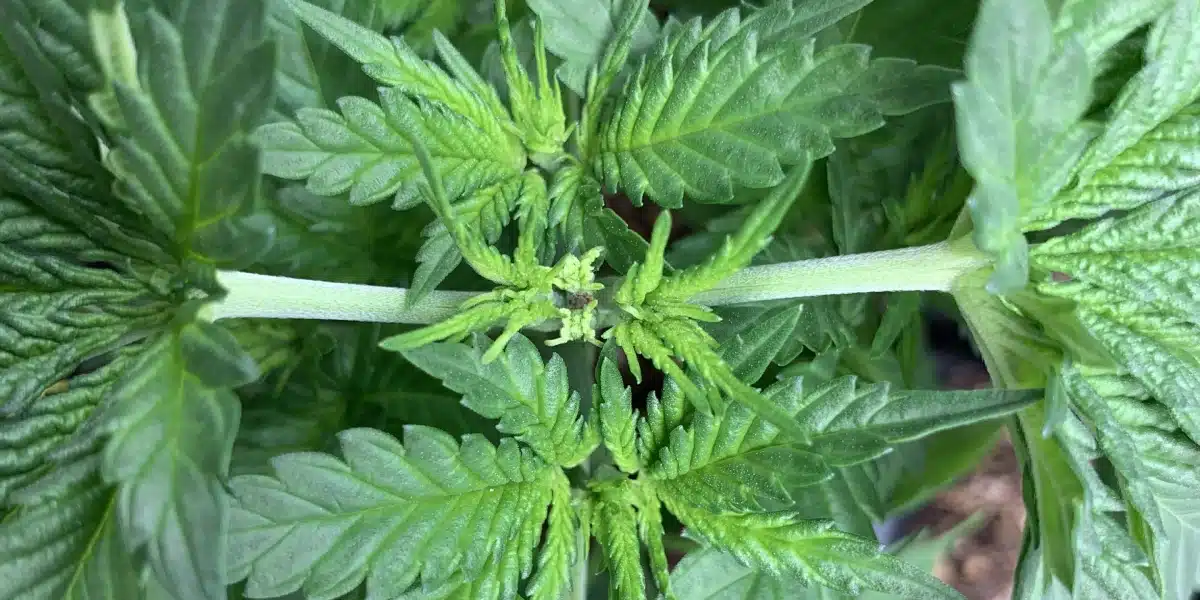
FAQs about Coma Strain
What is Coma Strain?
Coma Strain is a distinctive cannabis hybrid renowned for its potent effects and rich resin production. It features a complex flavor profile that may include earthy and fruity nuances, making it a favored option for experienced cultivators.
What are the ideal growing conditions for Coma Strain?
This strain prospers in environments with warm, steady temperatures—ideally around 70-80°F during the day. Whether grown indoors with high-quality LED or HPS lighting or outdoors in full sun, ensuring proper ventilation and a well-draining soil mix is essential for robust plant development.
What is the typical flowering period for Coma Strain?
The flowering phase for Coma Strain generally spans 8 to 10 weeks. Keeping an eye on trichome development can help determine the perfect harvest time to maximize both potency and flavor.
Whats a weed coma?
A weed coma is an informal term used to describe the deeply sedative and couch-locking effect that certain high-THC cannabis strains—like Coma Strain—can produce, often leading users to feel extremely relaxed or sleepy.


